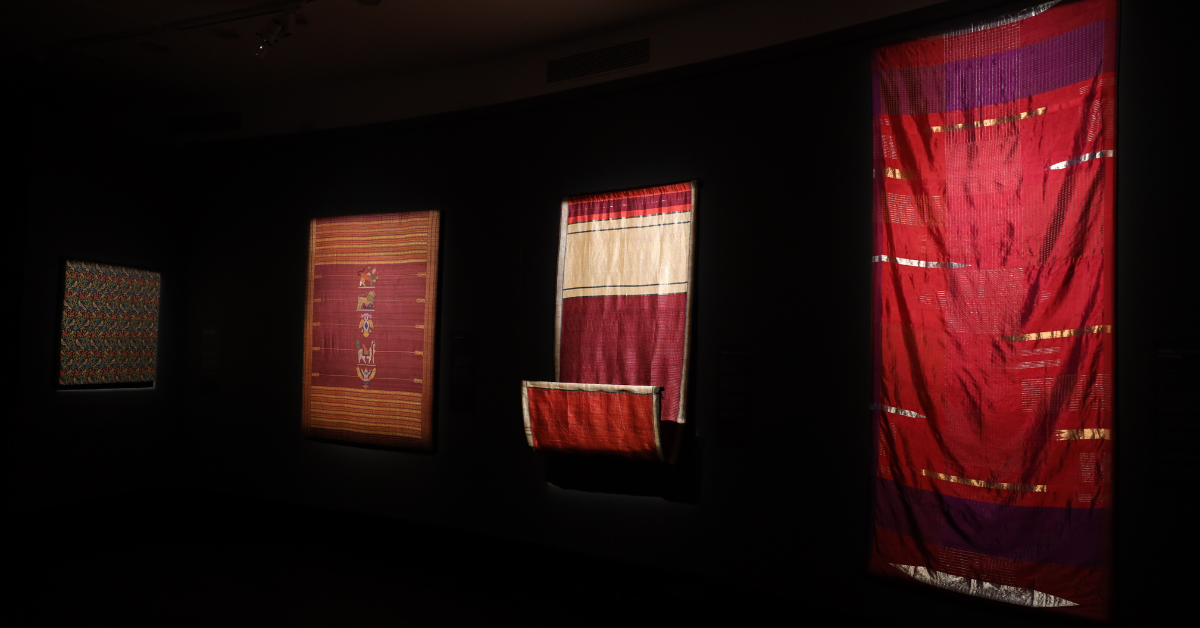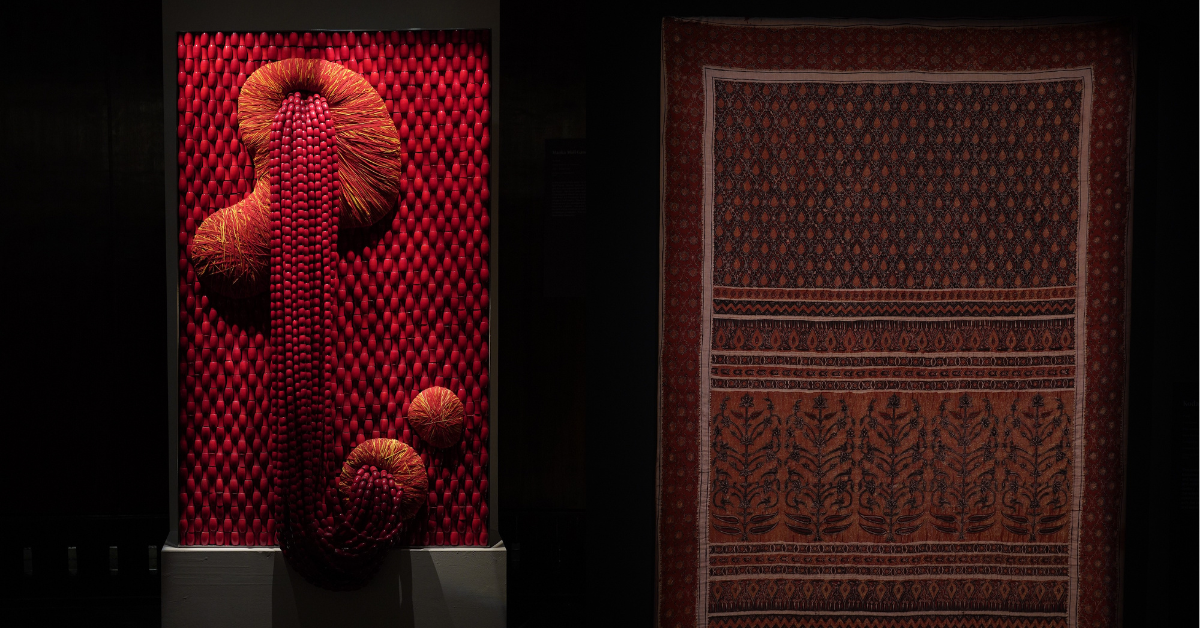
When someone says textile, it’s hard not to think of India. A rich textile heritage combined with a variety of textile crafts seeped into our culture, it’s no surprise that a textile exhibit in Mumbai is the latest to enter the city’s art scene.
In 2022, UNESCO released a list of 50 exclusive and iconic heritage textile crafts of India to raise awareness about the heritage. Each region in the country has its unique textile tradition and heritage; and several communities have their identities and livelihood attached to textile crafts as well. So, a celebration of India through a textile exhibit in Mumbai is welcome.
Sutr Santati. Then. Now. Next is an exhibit presented by National Gallery of Modern Art (NGMA), Mumbai and Abheraj Baldota Foundation, and curated by Lavina Baldota. It is inspired by the past and present of textiles and hopes to steer Indian textiles towards becoming more relevant for the future.
What’s weaving at NGMA
The exhibition was inaugurated on November 18 at NGMA, Mumbai. During the opening, Baldota shared her experience of curating the exhibit, “It’s been a lesson in understanding the collective effort of the hands, minds and hearts of farmers, spinners, dyers, printers, weavers, artisans, embroiderers and designers who create a textile. Also [it is] humbling [to] understand the core dependency between the climate soil, water and textile; now I am able to appreciate the strength of fabric comes from resilience.”
When you meander through NGMA, you will witness how many diverse textile traditions of the country this exhibit has managed to house. Each fabric is specially commissioned featuring the themes, techniques and materials used through the lens of innovation. And as you explore, you will notice how the artisans have manged to reinforce the value of fabric — an important legacy of Indian nationalism — defining the country’s contemporary artistic landscape.
The textile exhibit in Mumbai has an extensive showcase with over 125 traditional Indian textiles by close to 200 participants.
Intricate details, creative processes, and more

L to R: Manka Moli Ganesh Panel by Ashiesh Shah; Kodalikaruppur by Aks Studio
On display are textile exhibits created with processes of hand weaving, embroidery, resist-dyeing, printing, painting and appliqué, among other forms of yarn and fabric manipulation. These intricate creations feature a diverse array of fibres, including indigenous varieties like Kandu and Kala cotton, mulberry and wild silks, camel and sheep wool, goat and yak hair, and unconventional materials like lotus, banana, and water hyacinth.
The exhibit’s curatorial vision seeks to promote the ideals of organic and slow consumerism, and the inherent collaborative efforts required to push towards such goals. Their hope is to bring the rural and urban, the historical and the contemporary, and above all the local and the global as one.
Some exhibits that you should not miss out on include the work ‘Kodalikaruppur’ by Studio Aks, which is a two-scale reproduction of a 19th-century Kodalikaruppur textile. You can also marvel at a genre of exceptional fabrics, saris, shawls that were made for the Maratha royalty of Tanjore, which uses Jamdani and resist dyeing.
You can visit Sutr Santati. Then. Now. Next till January 7 at NGMA, Mumbai from Tuesday to Friday between 11 am to 6 pm; and on Saturday and Sunday between 11 am to 8 pm.

